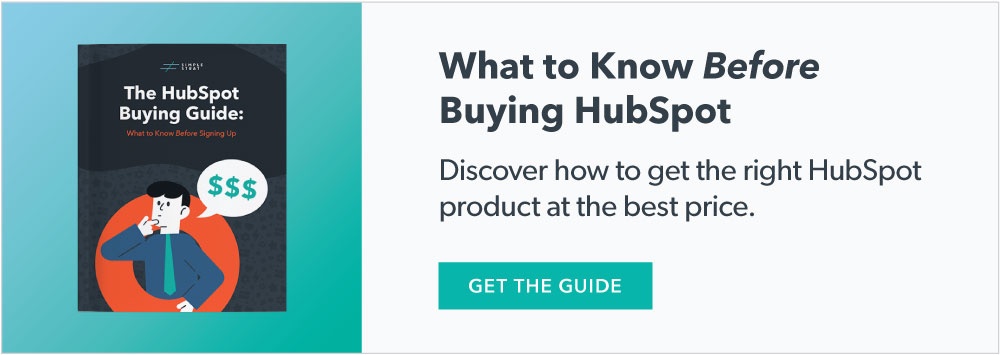You’re a B2B tech company with a truly exceptional product, service, or solution.
It fills a need, solves a problem, and eases the pain of your target audience. So, in an effort to get some solid leads into your funnel, you launch a content marketing strategy to attract, engage, and delight potential customers.
The marketing is working! The leads are steady, consistent, and qualified. Revenue must be through the roof…business is booming, right?
Not so fast.
Unless you have a flawless lead follow-up process, you might be struggling to convert most…some…or (*gasp*) any of your inbound leads. We promise you’re not alone. And we’re here to help.
More specifically, Seth Kinney, VP of Global Sales at Inside Sales Solutions, is here to help. A client of Simple Strat, Inside Sales Solutions (ISS) generates over 10,000 sales appointments each year for their clients – primarily B2B technology companies.
Needless to say, Seth knows a thing or two about the sales development process, so we sat down with him to get some advice and proven lead follow-up tips.
How is the Lead Follow-Up Process Different for B2B Sales?
Just like any lead, B2B prospects want fast follow-up, made as simple as possible through their preferred communication channels. With a twist.
There’s an extra layer of complexity selling to an entire organization as opposed to an individual. Navigating hierarchies and approval processes can be difficult.
“The main thing with B2B sales is it’s not just one person,” advises Seth. “The decision-making process often consists of a 5-to-7-person committee. Understand how all the different titles and personas play into the process…get the champion on board first...then try to get facetime with other decision makers.”
Master the Marketing-Sales Handoff…and Make it Snappy
When you really think about it, the inbound sales and marketing funnel isn’t very complicated…
Marketing contributes to revenue goals by generating quality top-of-funnel leads.
Sales contributes to revenue goals by effectively working the leads through the funnel with follow-up, qualification, and (hopefully) high conversion.
Sure, there’s lead scoring and lead management and feedback loops…and everything in between that can help streamline and improve your sales and marketing. But what you need to know to truly go from marketing qualified lead (MQL) to sales qualified lead (SQL) to customer is actually pretty basic.
As soon as the prospect becomes an MQL, it’s time for sales development to pounce. This means your inside sales reps (ISRs) and sales development reps (SDRs) need to act fast.
“30 minutes or less is the gold standard response time for converting SQLs,” says Seth. “Your returns diminish significantly after 24 hours, and after 48 hours, the prospect begins to forget about you altogether.”

Remember that they’re not just looking at your product/service—you should always assume they’ve provided contact information to several companies during their sourcing phase. In this early courting stage, it’s imperative that you’re faster than your competition in providing the information your potential customer is looking for.
Develop an Effective Inbound Sales Follow-Up Process
Start by creating a lead follow-up schedule that identifies your touchpoints—when and how you’ll be contacting your leads. Typically, it takes between 8 and 12 touchpoints over various communication channels to engage with an inbound lead.
Seth and the ISS sales development team, for example, have perfected an ideal cadence through a 24-touchpoint lead follow-up process that uses a blend of LinkedIn, phone, and email.
The process goes something like this…
- Start immediately with a triple-touch approach:
- A quick LinkedIn message to further educate and build trust and credibility early. This shouldn’t be a sales-heavy message, just a soft CTA.
- Immediately follow-up with a phone call. LinkedIn can be a slow-developing channel depending on how often the prospect checks their account. It’s a good start, but getting them on the phone asap is the ultimate goal.
- If there’s no answer on the call, leave a voicemail and follow-up with an email.
- From here the process gets phone-heavy, averaging 3-4 calls per every email you send.
- The entire 24-point process consists of about 5 emails and a LinkedIn message or two. The rest are phone calls.
Lead follow-up by phone
During the process, you’ll find the right mix of communication. When relying heavily on phone follow-up, Seth recommends a persistent and consistent approach.
“There’s an art and science to it, really. Throughout the 24-point lead follow-up process, our SDRs will make a call and leave a voicemail if there’s no answer. Then we wait 36 hours before following-up with a ‘quick touch’ call (a call with no voicemail)…wait another 24 hours and rinse and repeat.”
Ultimately, it’s important to strike a balance between giving leads time to respond and being persistent so they don’t move on to another service provider. As long as you continue to be professional, build trust, and educate along the way, most B2B inbound leads will respect and appreciate your staying top-of-mind with regular follow-ups.

When should you call vs. email?
This depends on a few factors. We’ve stressed the importance and success of lead follow-up via phone for a reason—80% of the ISS team’s success in closing inbound sales comes over the phone.
But there are times when an email-centric follow-up approach is appropriate and can be effective. When your prospect’s motivation is high, a timely email follow-up is all it takes to further qualify the lead and keep them progressing through the funnel.
“Only start the follow-up process with email when there has already been some education done,” insists Seth. “If the lead info comes as a result of a demo, trial, or consultation request, email follow-up is very much appropriate.”
For many of these types of requests, sales development teams have an auto email function in place that immediately deploys to schedule a follow-up appointment based on the specific request.
But while email can be the right option in some circumstances, it’s important to note that email response rates are currently at an all-time low. Due to COVID-19, many sales teams have developed a much more email-heavy cadence to their follow-up, which has in turn desensitized potential prospects by inundating their inboxes.
Are there better days/times to make contact?
“This is the million-dollar question,” notes Seth. “It really depends on the industry and the persona you’re trying to reach.”
While it’s almost impossible to provide a one-size-fits-all answer here, ISS has found that the beginning and end of the week tend to elicit stronger response rates.

Filling in the Blanks: Do Some Pre-Follow-Up Homework
With the right inbound strategy and infrastructure, leads should never be qualified by marketing and sent to sales with missing data. That said, you can only capture so much information on a lead gen form.
Good ISRs and SDRs will dig a little deeper to augment their lead lists. Whether through verification with contact database software or manual research of each lead on LinkedIn, you can glean quite a bit about your prospect and their pain points before you make contact. Thus, giving you an advantage by allowing for a more segmented and personalized follow up.
Aside from a reliable and accurate customer relationship management (CRM) tool, we recommend using tech resources like:
- Outreach for your sales engagement platform
- HubSpot for your email
- ZoomInfo for your data quality
- Calendly for your appointment scheduling
Closing the Sale
“People don’t buy a drill because they need a drill. They buy a drill because they need a hole in the wall,” says Seth.
That’s pretty profound if you think about it. And a terrific lesson for anyone looking to improve their lead follow-up. If you take the time to really understand “why” any given lead is looking at your product/service, it becomes much easier to truly understand their pain—and most importantly, how you can provide relief.
In addition to really digging for the real reason the lead is interested in the pre follow-up research we touched on above, layering questions throughout your communication can uncover key details.
“Many sales teams have a very standard, rote, scripted-and-templated follow-up process. When you’re able to paint a vivid picture in your mind on how you’ll be able to solve your customer’s problem and customize your lead follow-up appropriately, you’ll outshine your competition every time,” concludes Seth.
From automated lead nurturing to streamlined sales playbooks, converting leads becomes a lot easier with a tool like HubSpot. But which features do you need, and at what level? We made this buying guide to help you decide.


